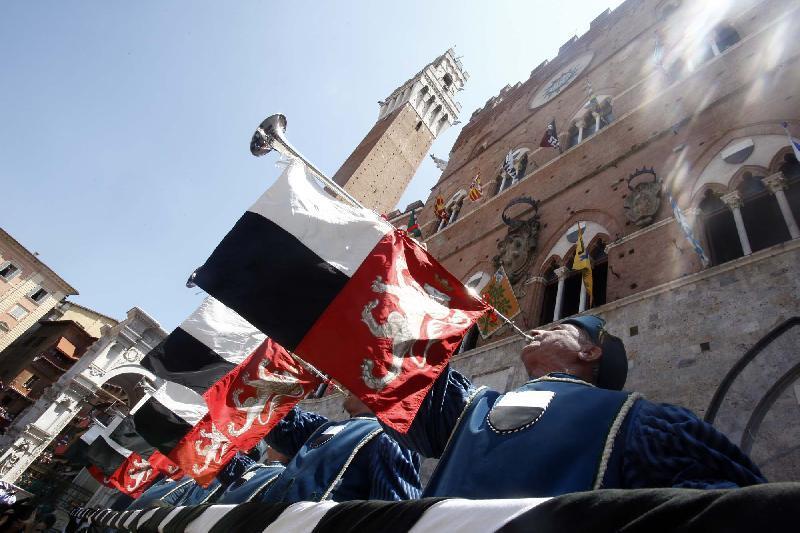
What does Carnival have in common with the Palio? In part, it has nothing to do with it. In part, it has anything to do with it.
Let’s proceed in order. Traditional celebrations usually origin from two different occasions: related-to-sanctoral-cycle celebrations during which important moments of collective life and memory are recreated or remembered, and Carnival celebrations during which ordinariness is suspended and behaviors that are usually uncommon are accepted. Our beloved “pugna”, for instance, were born as a carnival festivity- just like many other fighting games. Only in these occasions, what is usually forbidden can be done: going around beating up others. It’s just for fun and anywhere (in Siena like in Perugia, in Pisa like in Venice), players swear that battles aren’t fought maliciously and that, once the festivity of “the suspended time” has finished, there won’t be any residue of hostility and everything will be normal.
It’s exactly what happens during the Palio period: rivals beat each other in Piazza. We put our hands on each other but the day after, when the Palio ends, everything is over. If you want to take revenge, you have to wait the next Palio. But Pay attention, you citizens and contradaioli, Judiciary doesn’t understand this traditional game and, every time a fight happens, competitors are taken to the Palace of Justice in the Lizza. Let’s think of it.
The carnival spirit, however, it’s not just in fights but it is also expressed by rival-contadaioli teasing songs and by the winners’ party with orgiastic excess linked to food and mess. This is attested even in remote times: for instance, in an incision of 1712, it is possible to “read” about the contrada of Chiocciola celebrations for its victory. We find a sort of circus aspect in the scene which is characterized by two tamburini (drum players) who celebrate and a small dog that cheerfully pisses on the ground. Three tightrope walkers practice some exercises on the tight ropes above the street, while other characters try to climb a tree of the Cuccagna, whose top is full of delicacies, a triumph of food which represents Carnival better than it could be imagined. A carnevalata (a typical Carnival joke) took place in 1711 when The Contrada of Tartuca, that had a bad horse, put it in a barroccio (an antique gig) with a pagliaccio (a mattress with straw) and a blanket; the horse was eventually bound. And there was a farrier Doctor and Dottor Asino (Donkey Doctor)”- wrote a fun eyewitness, Girolamo Macchi. And something very carnivalesque was done also by the contrada of Nicchio, in 1721, when the fate gave the Contrada a previously injured horse that wasn’t helpful in the challenge. Nicchio people, in that occasion, paraded in Piazza with a float that ironically represented a stuffed horse.
But even in current days, the Sunday after the Palio, the procession of the winning contrada is a carnivalesque manifestation during which some groups tease the other contrade or the contrade that have lost the Palio, representing a real clownish triumph. After the dinner of the victory, the rituality and seriousness of Palio are replaced by “cenini” (other types of dinner parties), characterized by costumes and grotesque masks.
Did you think that Carnival was stranger to the culture of the Palio, didn’t you? You were wrong. Indeed, Carnival is linked to horse races and civil-festivity stories in a lot of places. Where? Just read “Il Palio di Siena. Una festa italiana” (“The Palio of Siena. An Italian festivity”), edited by Laterza, and you’ll know it. That’s it.
Duccio Balestracci
Translated by Giulia Staggini



